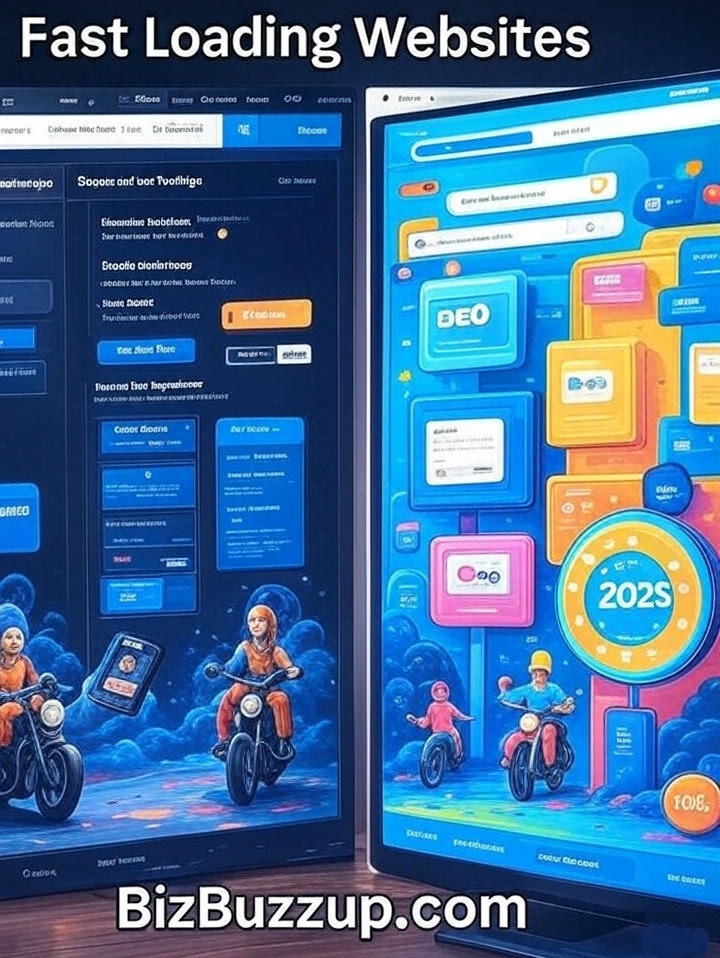
Why Website Loading Speed Is Strong for SEO
Website loading speed plays a major role in establishing a digital presence that is strong for SEO. When a site loads quickly, readers are more likely to stay engaged, which reduces bounce rates and signals quality to search engines. Google has made it clear that speed affects search rankings, especially in mobile-first indexing environments. A site that performs well in speed metrics shows search engines that it is optimized, relevant, and reader-friendly—all factors that make it strong for SEO. This makes speed more than a technical perk; it’s a core requirement for success in competitive search landscapes.
How to Speed Up Your WordPress Website (Simple Guide)
Core Web Vitals: The Key to SEO Success
Google’s Core Web Vitals are a set of performance indicators that measure how users experience a website. These include Largest Contentful Paint (LCP), First Input Delay (FID), and Cumulative Layout Shift (CLS). Each one measures different aspects of performance, like loading time, interactivity, and visual stability. Meeting these metrics makes your site technically sound and strong for SEO. Google considers these signals when ranking your pages. For example, reducing your LCP to under 2.5 seconds can significantly improve rankings. Readers are more likely to return to a site that feels smooth and responsive, which is why strong performance builds both loyalty and authority.
Mobile Optimization: A Must-Have for 2025
In today’s mobile-first world, optimizing your site for smartphones and tablets is no longer optional. A mobile-optimized site automatically adjusts layout, content, and images to fit different screen sizes without compromising speed. This not only improves the user experience but also helps you rank higher on Google. Mobile usability is a direct ranking factor, and any performance lag on mobile can hurt your visibility. To remain strong for SEO, your site must perform seamlessly on all devices. Tools like Google Mobile-Friendly Test and responsive design frameworks can help you stay ahead of the curve and keep your blog accessible anywhere.
How to Improve Loading Speed (Without Breaking Your Site)
Improving website speed can be done with a series of strategic steps that are both safe and effective. First, compress your images using tools like TinyPNG or WebP format. Second, minimize HTTP requests by reducing the number of plugins and scripts. Third, leverage browser caching so your content loads faster for returning visitors. Finally, use asynchronous loading for JavaScript. These techniques will not only boost your speed but also make your site strong for SEO. Implementing lazy loading, especially for images and videos, is another smart tactic that benefits both speed and Core Web Vitals.
Helpful Tools to Measure Speed
CDN and Hosting: A Strong Foundation for SEO
Your hosting provider and use of a Content Delivery Network (CDN) can significantly impact loading speed. A high-quality hosting service ensures uptime, fast processing, and stability. Pair that with a global CDN like Cloudflare or BunnyCDN, and you ensure faster access across different geographical regions. A CDN stores cached versions of your site around the world, reducing latency and improving speed. This infrastructure makes your entire blog setup more resilient and strong for SEO. Without it, your site may perform inconsistently, especially for international readers.
Regular Performance Audits and Maintenance
Just because your site is fast today doesn’t mean it will stay that way. Performing regular audits helps you identify new bottlenecks. Tools like Lighthouse and Screaming Frog SEO Spider offer detailed reports that guide your optimization strategy. You should also keep themes, plugins, and core WordPress files up-to-date. Regular housekeeping like removing unused media, minimizing database bloat, and optimizing CSS/JS files helps keep your site strong for SEO. By establishing a maintenance schedule, you prevent performance decay and maintain a healthy site structure that search engines reward over time.
More Ways to Strengthen Your SEO Strategy
If you want to build a long-term strategy that is strong for SEO, you need to look beyond just speed. Incorporate semantic HTML, build topic clusters, and link internally to support authority. For example, check out our guide on Latest SEO Strategies 2025 and our foundational post on Building a Strong SEO Foundation. Combine these approaches with fast loading times, and you’ll not only boost rankings but also improve the overall reader experience. Together, these tactics future-proof your blog and make your content consistently discoverable.
Let us know your thoughts in the comments.










